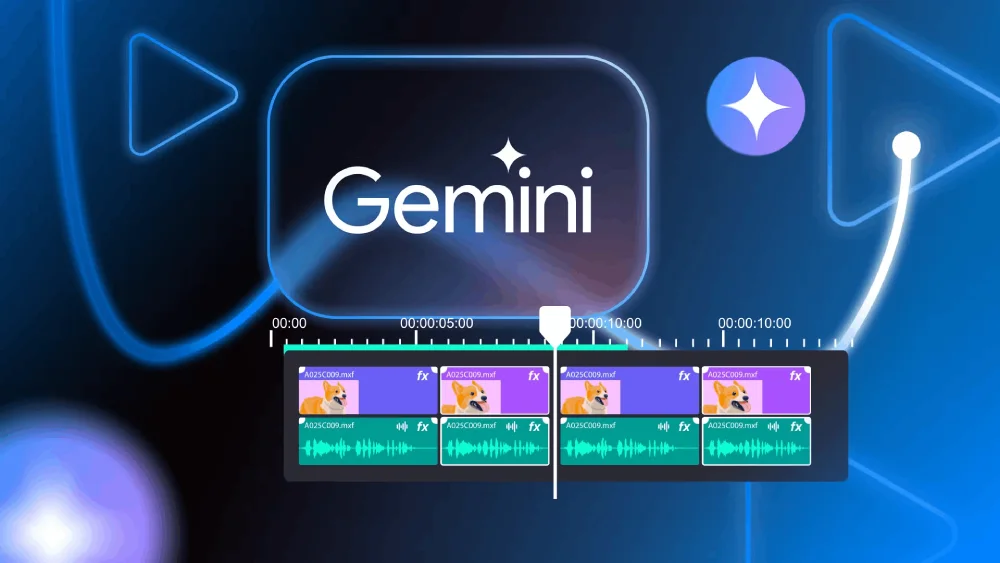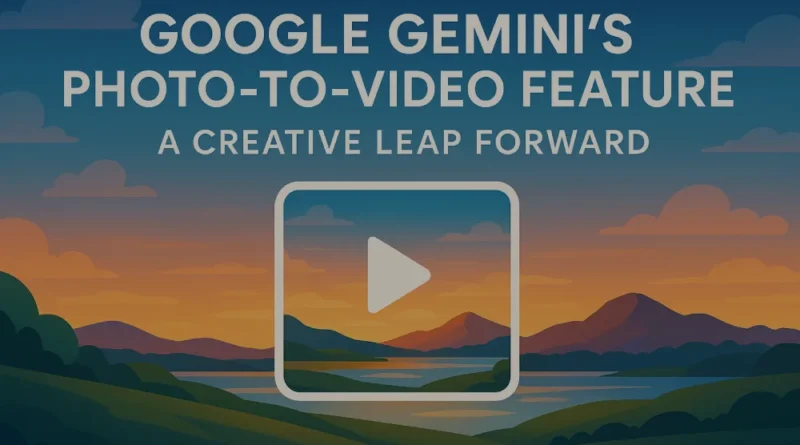Google Gemini’s Photo-to-Video Feature: A Creative Leap Forward
On July 10, 2025, Google CEO Sundar Pichai announced via X that Gemini AI’s new photo-to-video feature, powered by the Veo 3 model, is now available for Ultra and Pro subscribers. This innovative tool allows users to transform still images into dynamic 8-second video clips with sound, sparking excitement among creators and tech enthusiasts. As generative AI reshapes content creation, this feature positions Gemini as a formidable player in the global AI race. This article explores the feature’s capabilities, its significance in India’s creative landscape, and its broader implications, offering unique insights and credible data for an engaging, AdSense-compliant narrative.
Unveiling the Photo-to-Video Feature
Announced at Google I/O 2025, the photo-to-video feature is now live for Gemini AI Ultra and Pro subscribers in select regions, accessible via the web version of the Gemini app, with mobile app rollout ongoing through July 2025. Users can upload a photo, add a text prompt (e.g., “A dog running in a park”), and generate an 8-second MP4 video in 720p resolution and 16:9 format, complete with audio like background music or ambient sounds. Sundar Pichai highlighted its popularity, noting on X that users have created over 40 million videos with Veo 3 since May 2025, sharing a playful clip of Google’s dinosaur mascot, Stan, roaming its campus.
The feature, powered by Google’s Veo 3 model, includes safeguards like visible watermarks and invisible SynthID markers to identify AI-generated content, ensuring ethical use. Google restricts videos featuring identifiable people to prevent misuse, with plans to improve face animation in future updates.
How It Works and Why It’s Exciting
The process is seamless:
- Upload and Prompt: Users upload a photo to the Gemini app and provide a text description, such as “Animate this flower blooming under sunlight” or “Turn this sketch into a dancing character.”
- Customization: Add audio instructions, like “Add chirping birds” or “Include upbeat music,” for a richer experience.
- Output: Gemini generates an 8-second clip, downloadable or shareable directly from the app, ideal for social media, presentations, or personal projects.
This feature stands out for its accessibility, requiring no advanced editing skills, making it a game-changer for creators. Unlike previous Gemini controversies, such as the 2024 image generation backlash over biased outputs, this tool focuses on animating objects and nature, sidestepping sensitive issues.
Unique Insights: Redefining Creativity
- Democratizing Video Creation: By enabling anyone to create videos from photos, Gemini empowers small businesses, educators, and hobbyists in India, where 100 million+ content creators thrive (Hootsuite, 2025). This reduces reliance on costly tools like Adobe Premiere.
- Competitive Edge: The feature positions Gemini against rivals like OpenAI’s Sora and Runway AI, which offer similar capabilities but lack Gemini’s seamless integration with Google’s ecosystem (e.g., Photos, YouTube).
- Educational Potential: In India, where e-learning is projected to reach $10 billion by 2026 (EY-Parthenon), teachers can animate diagrams or historical photos to engage students, enhancing visual learning.
- Ethical Safeguards: Google’s restrictions on animating identifiable people address past AI missteps, like Gemini’s 2024 “woke” image controversy, rebuilding trust in a privacy-conscious market.

Local Context: India’s Creative Boom
India’s digital content creation scene is thriving, with over 500 million social media users and 800 million smartphone users (TRAI, 2025). The photo-to-video feature resonates with India’s young, tech-savvy creators in cities like Mumbai and Bengaluru, who dominate platforms like Instagram Reels and YouTube Shorts. For instance, small businesses in Delhi’s Chandni Chowk can turn product photos into engaging ads, while influencers in Hyderabad can animate travel snaps for viral content. The feature’s support for prompts in Hindi and regional languages (e.g., Tamil, Bengali) aligns with India’s linguistic diversity, making it accessible to non-English speakers.
Posts on X, like @ExpressTechie’s praise for the “dynamic clips” powered by Veo 3, reflect India’s excitement for this feature. However, India’s average internet speed of 63.55 Mbps and limited 5G coverage in rural areas may challenge seamless usage, particularly for cloud-based processing. Google’s partnership with Flipkart for the Ai+ Smartphone launch on July 8, 2025, suggests potential integration with budget devices, boosting accessibility.
Challenges and Opportunities
Challenges include:
- Connectivity Dependence: The cloud-based feature requires stable internet, a hurdle in India’s rural regions with inconsistent networks.
- Subscription Barrier: Limited to Ultra ($19.99/month) and Pro plans, it may exclude budget-conscious Indian users, though Google offers a two-month trial.
- Learning Curve: While user-friendly, crafting effective prompts requires practice, as noted in Google’s blog encouraging “imaginative” inputs.
Opportunities are vast. With India’s creator economy growing 25% annually (KPMG, 2025), Gemini’s tool could capture a significant share of the short-video market, competing with TikTok’s ban-driven void. Future updates, like mobile app integration and enhanced face animation, could further expand its appeal. Google’s focus on scaling Gemini to 500 million users in 2025, as Pichai stated, underscores its ambition to lead the AI content creation space.
How to Get Started
Subscribers can access the feature at gemini.google.com or via the Gemini app (Android/iOS) in supported regions. Upload a photo, enter a prompt, and customize audio or motion. Check compatibility via Google’s blog, as rollout varies by region and device. Non-subscribers can explore Gemini’s free features or sign up for a trial to test this tool.
Credible Sources
- The Times of India: Detailed the photo-to-video feature’s launch and Veo 3’s 40 million+ video milestone.
- The Hindu: Highlighted the feature’s 720p output and ethical safeguards.
- Tribune Pakistan: Noted mobile app rollout and creative use cases.
- X Posts: @sundarpichai and @demishassabis showcased user enthusiasm and feature demos.
- Google Blog: Encouraged imaginative prompts and confirmed watermarking for transparency.
Conclusion
Google Gemini’s photo-to-video feature, powered by Veo 3, is a creative breakthrough, transforming static images into vibrant clips with ease. For India’s creators, educators, and businesses, it offers a powerful tool to stand out in a competitive digital landscape. Despite connectivity challenges, its accessibility and ethical design make it a beacon of innovation. As Sundar Pichai envisions, this is Google’s step toward making AI “helpful for everyone.” Join the creative revolution and turn your photos into stories with Gemini.
Disclaimer
The information presented in this blog is derived from publicly available sources for general use, including any cited references. While we strive to mention credible sources whenever possible, Web Techneeq –Best Website design Company in Mumbai does not guarantee the accuracy of the information provided in any way. This article is intended solely for general informational purposes. It should be understood that it does not constitute legal advice and does not aim to serve as such. If any individual(s) make decisions based on the information in this article without verifying the facts, we explicitly reject any liability that may arise as a result. We recommend that readers seek separate guidance regarding any specific information provided here.

